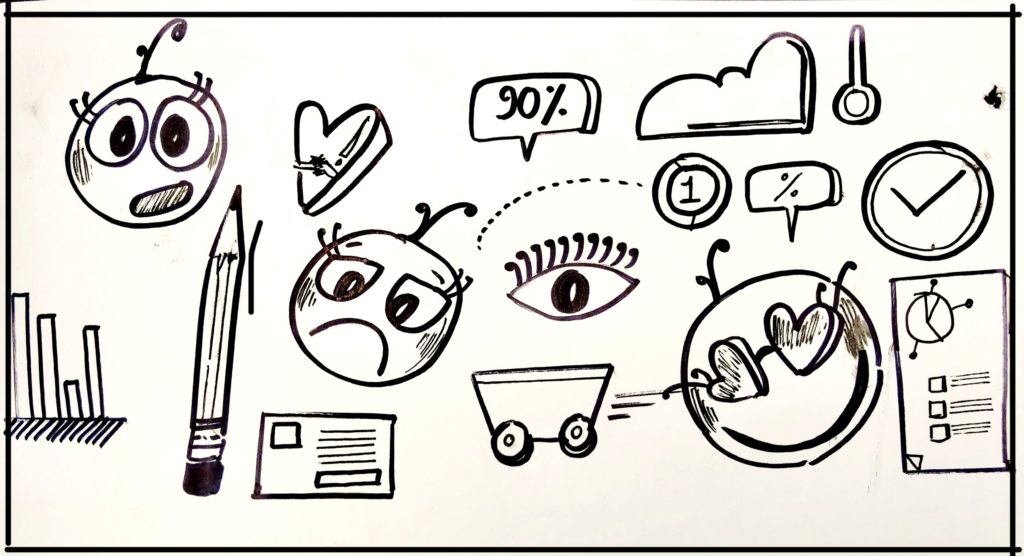User Experience is a concept that has not been lucidly depicted anywhere over the cyber space. In commerce, user experience is a person’s emotions and attitudes about using a particular product, system or service. Do you want your website, application or product to be super successful? How can you measure user experience? Why do you need to measure user experience?
UX METRICS
To measure anything in the entire universe, we use metrics. Now, how do metrics work for measuring User Experience?
UX metrics are a set of quantitative data points that can be used to compare, measure and track the user experience of a particular application, website or product over time.
Metrics are basically all of those measurements that go towards quantifying these higher goals of bettering a business, expanding user interaction, making major changes to the institution models or even a simple task such as getting feedback. (https://onix-systems.com/blog/matters-of-the-heart-how-to-measure-ui-and-ux-design)
KEY PERFORMANCE INDICATORS
Key Performance Indicators reflect the overall goals of a particular business. Few key point indicators to keep in mind are:
- Task success rate(number of correctly executed tasks)
- Time on task(the time a user needs to complete a task successfully)
- Search vs. Navigation(how much is the search or navigation bar used)
- User error rate(number of times a user makes an error concerning the task)
- System usability scale(to test the usability of the product)
- Net promoter score(customer loyalty and satisfaction)
- Consumer satisfaction(to measure the customer satisfaction)
(https://www.testingtime.com/en/blog/important-ux-kpis/)
WHY DO WE NEED TO MEASURE UX?
For any business of any sort, customer satisfaction is key. User Experience is the prime helmsman of customer satisfaction.
User Experience should be measured since:
- Data Analysis shows only a part of the entire story
- Intensifying user experience is the absolute goal of a UX designer
- Results from measuring UX provides designers with valuable insight towards constantly improving a design
BEHAVIOURAL VS. ATTITUDINAL UX
Behavioural UX depicts what the users do, how they behave when they are introduced to the product. Usability testing is one of the most common ways to measure behavioural UX. Through a series of monitoring user tests along with remote moderated studies, behavioural UX can be measured.
Typical metrics you could capture include these task-level behavioural measurements:
- Abandonment Rate
- Pageviews
- Problems and Frustrations
- Task Success
- Task Time
Attitudinal UX depicts what users say, how they react or think-out-loud about their emotions when they are first introduced to the products. What the users say before, after and while using the product can help measuring attitudinal UX.
To measure this, you might want to capture these attitudinal metrics:
- Loyalty
- Usability
- Credibility
- Appearance
(https://www.userzoom.com/blog/what-metrics-do-the-experts-use-to-measure-ux-effectiveness/)
THE “HEART” FRAMEWORK
There are various frameworks used to measure User Experience. The one I find particularly interesting is the “HEART” framework by Kerry Rodden, Hilary Hutchinson and Xin Fu as a part of the Google’s research team. The “HEART” framework measures product user experience.
Happiness: measures of attitudes, often collected via surveys or analysis
Engagement: level of user’s involvement with the product
Adoption: gaining new users of a product or a feature by user promotion
Retention: existing user return rate
Task Success: efficiency, effectiveness and error rate
(https://uxstudioteam.com/ux-blog/measure-user-experience/)
So, measuring user experience is key to developing a successful product or even increasing the efficiency of an existing one. These were a few tools and techniques to measure user experience.
